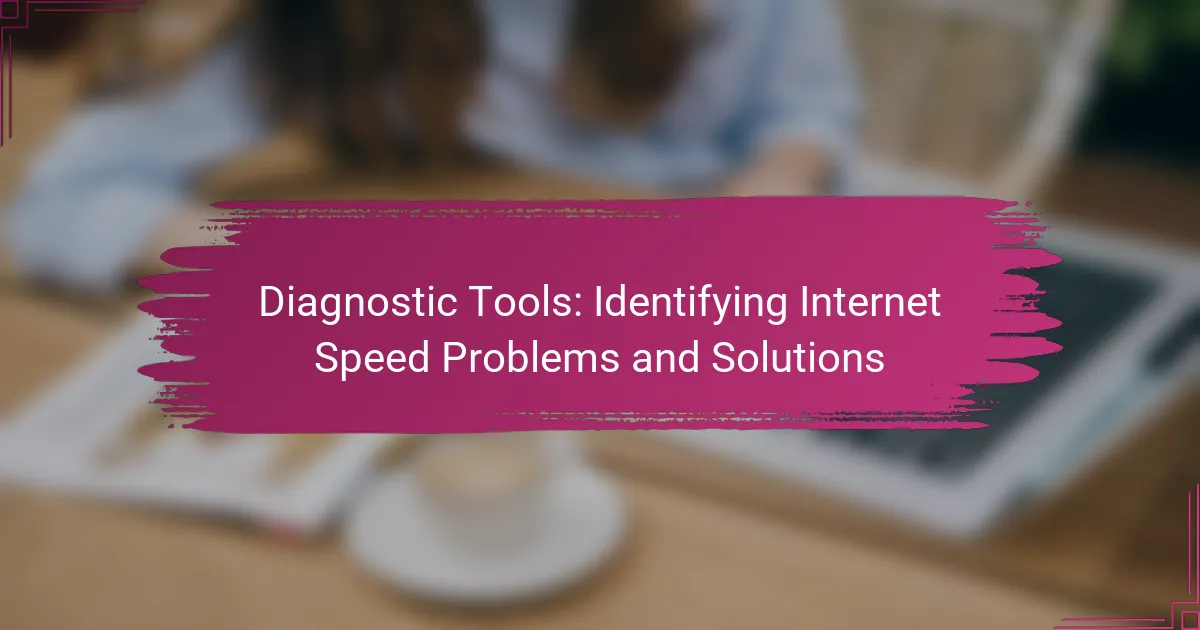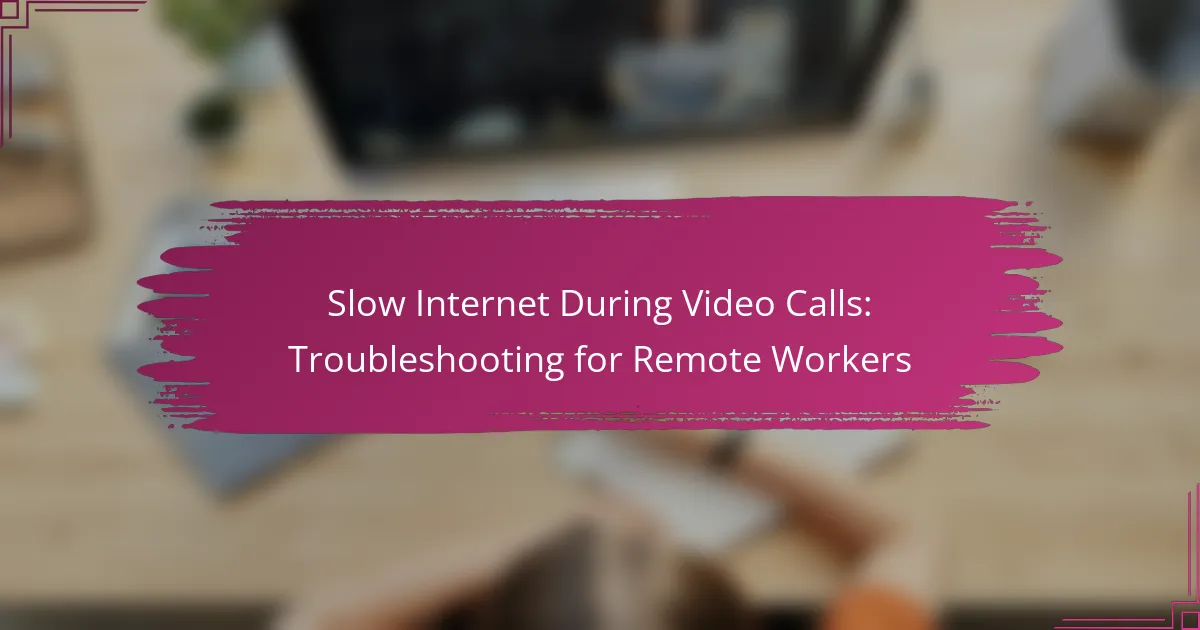Experiencing slow internet can be frustrating, but understanding the potential causes is the first step toward resolution. Factors such as network congestion, ISP throttling, and outdated equipment can significantly impact your connection speed. By implementing effective troubleshooting strategies and considering options like upgrading your plan or optimizing your Wi-Fi settings, you can enhance your online experience and regain reliable internet access.
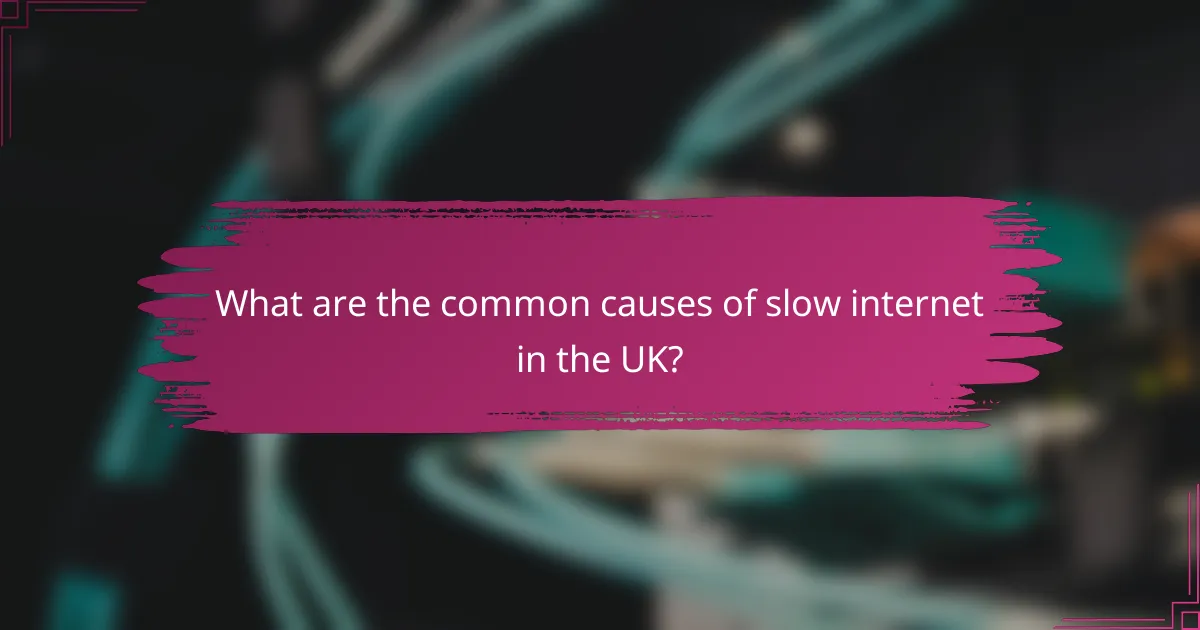
What are the common causes of slow internet in the UK?
Slow internet in the UK can stem from various factors, including network congestion, ISP throttling, outdated equipment, distance from the exchange, and interference from other devices. Understanding these causes can help consumers identify and resolve their internet speed issues effectively.
Network congestion
Network congestion occurs when too many users are trying to access the internet simultaneously, leading to slower speeds. This is particularly common during peak hours, such as evenings when many households are online for streaming or gaming.
To mitigate network congestion, consider scheduling high-bandwidth activities during off-peak hours. Upgrading to a higher-tier internet plan may also alleviate some congestion issues, as these plans often come with higher bandwidth allowances.
ISP throttling
ISP throttling is when your internet service provider intentionally slows down your connection based on your usage patterns or the type of content you are accessing. This practice is often employed to manage network traffic and ensure fair usage among customers.
If you suspect throttling, check your speeds during different times of the day and for various activities. Switching to a different ISP that offers more transparent policies may be a viable solution if throttling is a persistent issue.
Outdated equipment
Using outdated routers or modems can significantly impact your internet speed. Older devices may not support the latest standards, leading to slower connections and limited performance.
Consider upgrading your equipment to a modern router that supports the latest Wi-Fi standards, such as Wi-Fi 6. Regularly updating the firmware on your devices can also help maintain optimal performance.
Distance from the exchange
The distance from your home to the local exchange can affect your internet speed, particularly for DSL connections. The further away you are, the weaker the signal, resulting in slower speeds.
If you live far from the exchange, consider switching to a fibre-optic connection, which can provide faster speeds regardless of distance. Checking with your ISP about available options in your area can help you find the best solution.
Interference from other devices
Interference from other electronic devices can disrupt your Wi-Fi signal, leading to slower internet speeds. Common culprits include microwaves, cordless phones, and even neighboring Wi-Fi networks.
To reduce interference, position your router away from other electronics and consider changing the Wi-Fi channel in your router settings. Using a wired connection for devices that require stable internet can also help improve performance.
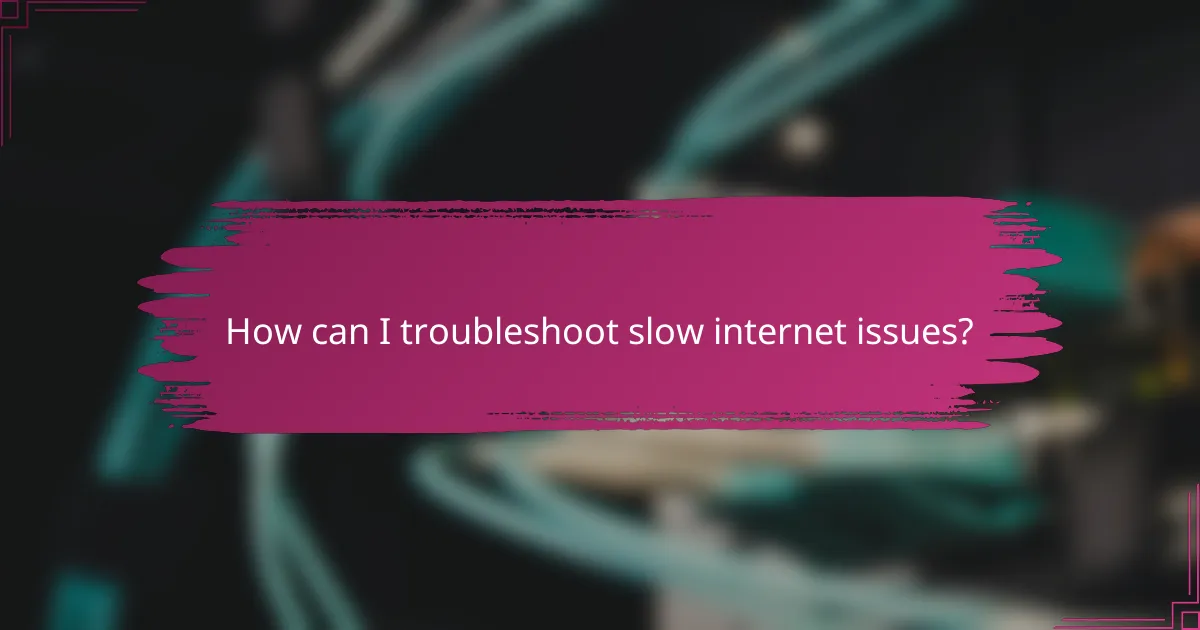
How can I troubleshoot slow internet issues?
Troubleshooting slow internet issues involves a series of steps to identify and resolve the underlying causes. By systematically checking your internet speed, restarting your router, testing different devices, and connecting via Ethernet, you can often improve your connection quality.
Check internet speed
The first step in troubleshooting slow internet is to check your internet speed using an online speed test tool. This will give you a clear indication of your current download and upload speeds compared to what your Internet Service Provider (ISP) promises.
If your speed is significantly lower than expected, it may indicate an issue with your connection or service plan. Keep in mind that speeds can vary based on the time of day, so consider testing at different times for a comprehensive view.
Restart the router
Restarting your router can resolve many connectivity issues by refreshing the network connection. Simply unplug the router, wait for about 30 seconds, and then plug it back in. This process can clear temporary glitches that may be affecting your internet speed.
After restarting, give the router a few minutes to fully reboot and reconnect to the internet. Check your speed again to see if there’s an improvement.
Test different devices
If your internet remains slow, test the connection on multiple devices. This helps determine whether the issue is device-specific or affects your entire network. For example, if one device is slow while others are fast, the problem may lie with that particular device.
Make sure all devices are updated and free from malware, as these factors can also impact performance. If all devices are slow, the issue likely lies with your ISP or network setup.
Connect via Ethernet
For a more stable connection, try connecting your device directly to the router using an Ethernet cable. Wired connections typically offer faster speeds and lower latency compared to Wi-Fi, making it easier to diagnose issues.
If your internet speed improves significantly with a wired connection, the problem may be related to Wi-Fi interference or distance from the router. Consider optimizing your Wi-Fi setup or using a mesh network for better coverage.

What are effective resolution strategies for consumers?
Consumers facing slow internet can adopt several effective resolution strategies to enhance their online experience. These strategies include upgrading their internet plan, switching ISPs, optimizing Wi-Fi settings, and using Wi-Fi extenders to improve connectivity.
Upgrade your internet plan
Upgrading your internet plan can significantly improve speed and reliability. Many ISPs offer various tiers of service, so consider moving to a higher bandwidth package that better suits your usage needs, especially if you stream videos or play online games.
When evaluating plans, look for options that provide speeds in the range of 100 to 500 Mbps for households with multiple users. Be aware of promotional rates that may increase after a certain period, and check for any data caps that could impact your usage.
Switch ISPs
If your current ISP consistently fails to meet your speed expectations, switching to a different provider may be a viable solution. Research local ISPs to compare their offerings, customer service ratings, and user reviews to find a better fit.
Consider factors such as installation fees, monthly costs, and contract lengths when making your decision. In some areas, you might find competitive pricing or promotional offers that make switching worthwhile.
Optimize Wi-Fi settings
Optimizing your Wi-Fi settings can enhance your internet performance without additional costs. Start by placing your router in a central location in your home to maximize coverage and reduce dead zones.
Additionally, ensure your router’s firmware is up to date and consider changing the Wi-Fi channel to minimize interference from neighboring networks. Using the 5 GHz band instead of the 2.4 GHz band can also provide faster speeds over shorter distances.
Use a Wi-Fi extender
A Wi-Fi extender can help eliminate dead zones and improve coverage in larger homes. These devices amplify your existing Wi-Fi signal, allowing you to access the internet in areas where the signal is weak.
When choosing a Wi-Fi extender, look for one that supports the same standards as your router, such as 802.11ac, to ensure compatibility and optimal performance. Position the extender within range of your router to achieve the best results.

How do I choose the right ISP for my needs?
Choosing the right Internet Service Provider (ISP) involves assessing your specific requirements, such as speed, customer support, and contract conditions. By understanding these factors, you can select an ISP that aligns with your internet usage and budget.
Compare internet speeds
Internet speed is a crucial factor when selecting an ISP. Look for plans that offer speeds suitable for your activities, such as streaming, gaming, or working from home. Generally, speeds of 25 Mbps are considered sufficient for basic browsing, while 100 Mbps or higher is recommended for multiple users or high-definition streaming.
Check the ISP’s advertised speeds against user reviews to ensure they deliver on their promises. Some providers may offer promotional rates that change after a few months, so be aware of the long-term speed you can expect.
Evaluate customer service ratings
Customer service can significantly impact your experience with an ISP. Research ratings from independent review sites to gauge the quality of support offered. Look for ISPs with high ratings for responsiveness and problem resolution.
Consider contacting the ISP’s customer service before signing up to assess their responsiveness. A quick inquiry can reveal how helpful and knowledgeable their representatives are, which is vital if you encounter issues later.
Consider contract terms
Contract terms can vary widely among ISPs, affecting your flexibility and overall cost. Pay attention to the length of the contract, as some may require commitments of one to two years, while others offer month-to-month options.
Review the terms for early termination fees, which can be substantial. If you anticipate moving or changing your service, a flexible contract may save you money and hassle in the long run.
Look for hidden fees
Hidden fees can significantly increase your monthly bill, so it’s essential to read the fine print. Common charges include installation fees, equipment rental costs, and data overage fees. Make sure to ask the ISP about any additional costs that may not be included in the advertised price.
Request a detailed breakdown of all fees before signing up. This transparency will help you avoid surprises on your bill and ensure you choose an ISP that fits your budget.
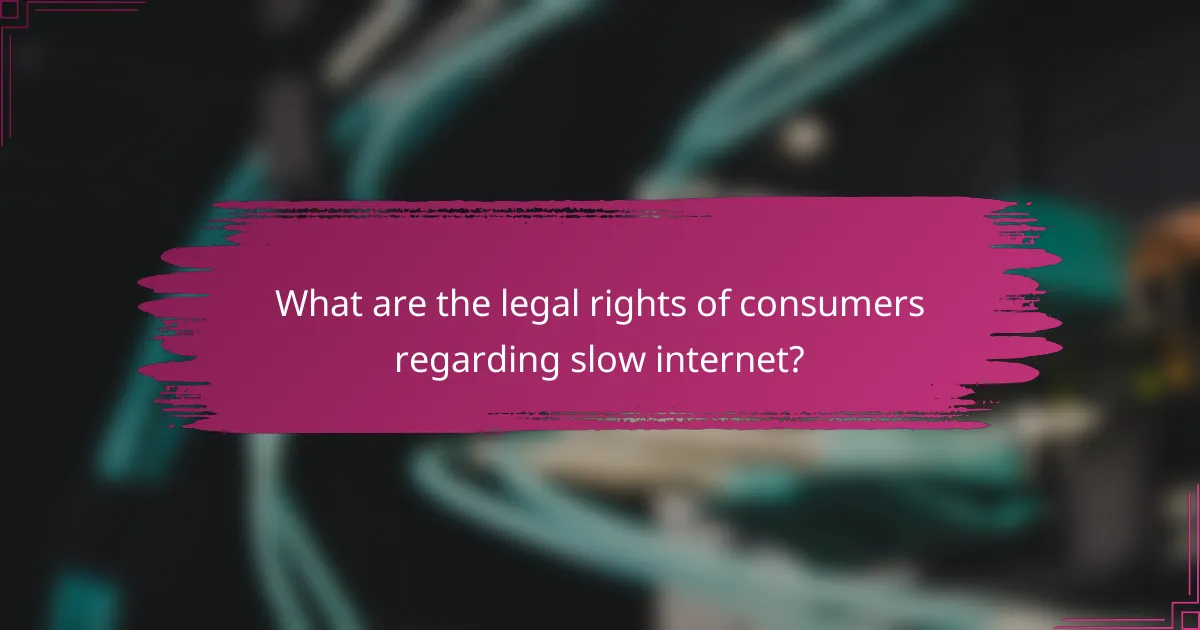
What are the legal rights of consumers regarding slow internet?
Consumers have specific legal rights when it comes to slow internet service, often outlined in the terms of service provided by their Internet Service Provider (ISP). These rights typically include guarantees for minimum speeds and the ability to cancel contracts if the service does not meet agreed-upon standards.
Right to a minimum speed
Consumers are entitled to a minimum internet speed as specified in their service agreement. ISPs are generally required to deliver speeds that are close to what they advertise, and if the actual speeds fall significantly short, consumers may have grounds for complaint or action.
For example, if an ISP advertises speeds of 100 Mbps but consistently delivers only 30 Mbps, this could violate consumer rights. Many countries have regulations that require ISPs to provide accurate speed information, and consumers can often report discrepancies to regulatory bodies.
Ability to cancel contracts
If an ISP fails to provide the minimum speed as promised, consumers typically have the right to cancel their contracts without incurring penalties. This right allows consumers to seek alternative providers who can meet their internet speed needs.
Before canceling, it is advisable to document the speed issues and communicate with the ISP to resolve the problem. If the issue persists, consumers should review their contract for cancellation terms and follow the proper procedures to ensure a smooth transition to a new service provider.

